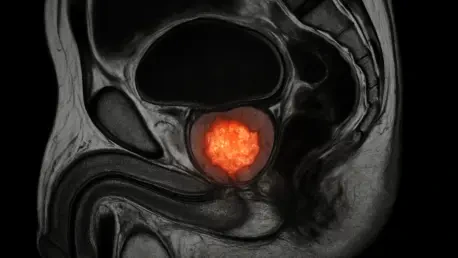In a landscape where prostate cancer remains one of the most common cancers among men worldwide, the search for efficient, accessible, and accurate diagnostic tools has never been more critical, especially as recent advancements bring a new contender—micro-ultrasound technology—to the forefront. This innovation promises to challenge the dominance of MRI in detecting clinically significant prostate cancer. Groundbreaking results from a major clinical trial have sparked discussions among urologists and researchers about whether this innovative imaging platform can truly stand toe-to-toe with established methods. With implications for patient outcomes and healthcare equity, this development could reshape diagnostic protocols across the globe. The focus now shifts to understanding how this technology performs in real-world settings and what it means for the millions of men at risk.
Breaking New Ground in Prostate Imaging
Unveiling Trial Results
The OPTIMUM clinical trial, conducted across 20 centers in eight countries with over 800 biopsy-naive men, has delivered compelling evidence on the capabilities of micro-ultrasound technology. Specifically, the ExactVu platform has demonstrated non-inferiority to MRI fusion-guided biopsy in identifying clinically significant prostate cancer, defined as Gleason Grade Group 2 or higher. Published in a prestigious medical journal and showcased at major urological conferences, these findings highlight a potential paradigm shift. Unlike MRI, which often requires specialized facilities and longer wait times, micro-ultrasound offers a high-resolution alternative that can be used directly in an office setting. This trial not only validates the technology’s accuracy but also underscores its potential to streamline the diagnostic process, reducing delays for patients who need urgent care.
Expert Insights on Impact
Prominent voices in the field, such as Dr. Laurence Klotz from the University of Toronto, have emphasized the transformative nature of micro-ultrasound for prostate cancer diagnosis. The technology’s user-friendly design and cost-effectiveness stand out as key advantages, particularly for regions where access to MRI is limited. By operating at a remarkable frequency of 29 MHz, the ExactVu system achieves exceptional detail, down to 70 microns, enabling precise targeting of suspicious areas in the prostate. This level of clarity rivals that of more expensive imaging methods, potentially reducing the dependency on centralized diagnostic centers. For many patients, this could mean faster diagnoses and fewer barriers to receiving high-quality care, addressing long-standing disparities in healthcare delivery across diverse populations.
Implications for Clinical Practice
Enhancing Accessibility in Diagnostics
One of the most striking benefits of micro-ultrasound lies in its ability to democratize access to advanced diagnostic tools for prostate cancer. Traditional MRI scans, while effective, often come with high costs and limited availability, particularly in underserved areas or developing regions. The introduction of a portable, in-office solution like ExactVu could bridge this gap significantly. Its integration with systematic biopsy has shown detection rates comparable to MRI, suggesting that urologists might not need to rely solely on complex imaging setups. Furthermore, the technology’s FusionVu feature allows for seamless combination with MRI data when available, offering a hybrid approach that maximizes diagnostic accuracy. This flexibility could redefine how clinicians approach initial screenings, making advanced care more inclusive.
Shaping Future Standards of Care
Looking ahead, the practical advantages of micro-ultrasound could influence the standard of care in urology over the coming years. The OPTIMUM trial’s rigorous methodology and international scope lend strong credibility to the idea that this technology might become a cornerstone in prostate cancer detection. Beyond its diagnostic prowess, the system’s affordability and ease of use present a compelling case for widespread adoption, especially in settings where resources are constrained. Industry leaders have hailed these trial outcomes as a milestone, reflecting a broader movement toward equitable healthcare solutions. As more clinicians become familiar with micro-ultrasound, its role could expand, potentially reducing the burden on MRI facilities and allowing for quicker intervention. These developments pave the way for meaningful improvements in patient outcomes, marking a significant step forward in the fight against prostate cancer.









